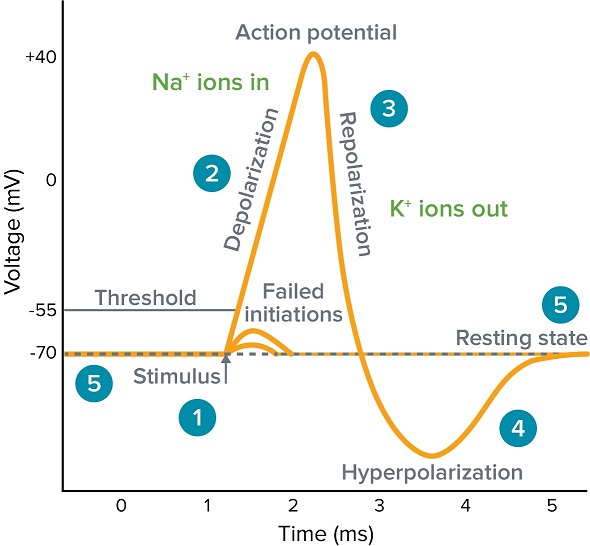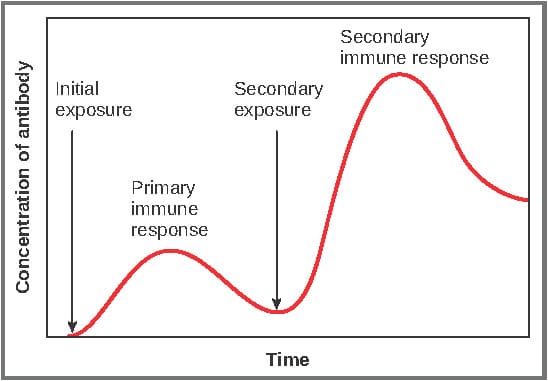T cell development involves a parallel process of staged T cell lymphocyte differentiation accompanied by acquisition of a diverse TCR repertoire for antigen recognition. T cells are derived from haematopoietic stem cells that are found in the bone marrow.

What Is An Action Potential Action Potential Chart Membrane Potential Molecular Devices
T cells migrate from the bone marrow to the thymus where they become.

. T-cells enter the thymus at its cortex and as they differentiate through the following stages they migrate toward the thymic medulla. Thymocytes mature in a series of steps based on the development of cell surface markers. Infected host cell.
Progenitors of those cells migrate to the thymus here they are known as thymocytes. Label the diagram showing stages involved in T-cell development. Experts are tested by Chegg as specialists in their subject area.
TF T cells are dissimilar to B cells in that they have more than 1 terminally differentiated type of cell. T cells develop from hematopoietic stem cells in the bone marrow. Multiple copies of germline VDJ Describe the sequence of events in T cell developmental pathway from a stem cell bone marrow to a mature naive CD4 or CD8 T cell thymus.
Describe the types of T cells outline the steps of T cell development and their antigen receptors. Most cells in the thymus develop into ɑβ T cells while about 5 become γδ T cells. The steps in this process are regulated through a complex transcriptional network specific receptor-ligand pair interactions and sensitization to.
Diagram T and B cell development. Activated B cells Perforin forms pores in the target cells plasma membrane. T-cells are made in the bone marrow like all red and white blood cells.
TF The thymus directly recieves T cells via lymph and blood vessels. Where does Pre-T cell development occur in the Thymus. Effector T Cells-have short lifespans and carry out the functions of an immune responseCytotoxin T Cells-also known as CD8 cells have the primary job to kill toxic cellsTheir purpose becomes the removal of virally infected cells bacteria and tumor fragments through a.
During differentiation T-cells are progressively. CD8 CD4 and CD3 are also present on surface of the T-cell. The migration of progenitor T-cells from the early sites of hematopoiesis to the thymus takes place at about day 11 of gestation in mice and in 8 th or 9 th week of gestation in humans.
Cytotoxic T cells CD4 T helper cells T cell precursor Th 1 Th 2 212005 BIOS 486A 586A 20 T cell development Progenitor cells enter thymus Differentiate into Dendritic cells γδ αβ Double negative cells CD3-CD4-CD8-Double positive cells CD3 CD4 CD8 βchain gene rearrangement αchain gene rearrangement Single positive cells. Include in your description the following-CD2 preTCR CD3 TCR CD4 CD8 double positive single positive. Development of T cells in the mouse.
T lymphocytes originate from haematopoietic stem cells within the bone marrow. T cell development is broken into three key stages based on which key molecules it is expressing on its surface at any given time. The Series of events through which T cells acquire their structural and functional competence is called T-cell development.
Place during T cell development and activation. The thymus is just above your heart and is about the size of a deck of playing cards. T cell development occurs in multiple discrete steps beginning with lineage commitment by hematopoietic stem cells in the specialized environment of the thymus.
T cell progenitors originate in the bone marrow and through a series of defined and coordinated developmental stages enter the thymus differentiate undergo selection and eventually mature into functional T cells. T cell repertoire and recall how this is generated. These molecules CD3 CD4 and CD8 are expressed in addition to the T cell receptor.
The most immature thymocytes are CD4 CD8 double negative DN. Some of these multipotent cells subsequently become lymphoid progenitor cells that leave the bone marrow and travel to the thymus via the blood. CD4 T cell ISS Us Memory T cell Activated B cells 1 O OOO ESS Perforin forms pores in the target cells plasma.
I the exclusion of alternative fates and repression of stem-cell associated genes leading to a definite commitment. Once in the thymus T lymphocytes undergo a selection process in which the majority of developing T cells. T-cell maturation activation and differentiation T-cell maturation.
T-cell maturation involves expression of T-cell receptor and associated accessory molecules MHC restriction among other events. In mouse models the role of T cells is studied in the context of a specific type of pathogen antigen or disease condition over a limited time. Who are the experts.
Memory T cells produced during expansion of activated T cell population. This is achieved by the genomic recombination process that selects variable V joining J and in some cases diversity D gene segments from the multiple genomic copies. Each stage of T cell development occurs in a specific microenvironment.
We review their content and use your feedback to keep the quality high. Cytotoxic T cells also called CD8 T cells - are involved in the direct destruction of cells that have become cancerous or are infected by a pathogenCytotoxic T cells contain granules sacs containing digestive enzymes or other chemical substances that they utilize to cause the target cell to burst open in a process called apoptosisThese T cells are also the. The name T-cell comes from the organ where they mature the thymus.
T cells coordinate multiple aspects of adaptive immunity throughout life including responses to pathogens allergens and tumors. The progenitors of these cells migrate to and colonise the thymus. Does the Th-2 have to process the Ag first before the B-cell or is it the other way around.
Describe each stage and list all important cell surface makers and transcription factors involved at each stage. Throughout life T cells coordinate multiple aspects of adaptive immunity including responses to pathogens allergens and tumors. Most T-cells are made when youre young so kids have a bigger thymus than adults.
T-cell maturation involves the re-arrangement of the germ-line TCR genes and the expression of various membrane. Production of T cells. During T cell development three main phases can be identified orchestrated by distinct regulatory modules.
During the thymic stages of T-cell development the cells commit to the T-cell lineage begin expressing functional T-cell Receptor and T-cell Coreceptor thus differentiating into CD4 or CD8 T-cells. All T cells express the CD3 molecule which is part of the T cell receptor and once the T cell is fully mature it will either. Fully Developed TCR is present on surface of T-Cell 2.
In mouse models the role of T cells is studied in the context of a specific type of pathogen antigen or disease condition over a limited timeframe while in humans T cells control multiple insults simultaneously throughout the body and. Describe the major events of the Pre-T cell phase. The utilization of new genetic tools especially transgenic mouse models and investigative tools facilitate understanding of T cell development and activation for the improvement of T cell-based therapy eg.
Ii the generation and selection of clonal T cell receptors TCRs which require sequential steps of gene rearrangement and strict quality. Given that they are characterized by specific intracellular events and distinctive cell-surface markers. Human T Cell Development Localization and Function throughout Life.
FALSE the thymus does not recieve lymph. Progression through the developmental pathway in the thymus is controlled by soluble cytokine growth factors and cellular interactions between the maturing thymocytes and the local stromal cell compartment. At first they pass through several stages DN1DN4.
The developing progenitors within the thymus also known as thymocytes undergo a series of maturation steps that can be identified based on the expression of different cell surface markers. The thymic stroma consists of.

Humanizing Big Data The Key To Actionable Customer Journey Analytics Radar Graph Empathy Maps Data Visualization

Primary And Secondary Responses Memory Cells Teachmephysiology

Radar Spider Chart Radar Chart Chart Design Thinking Process
0 Comments